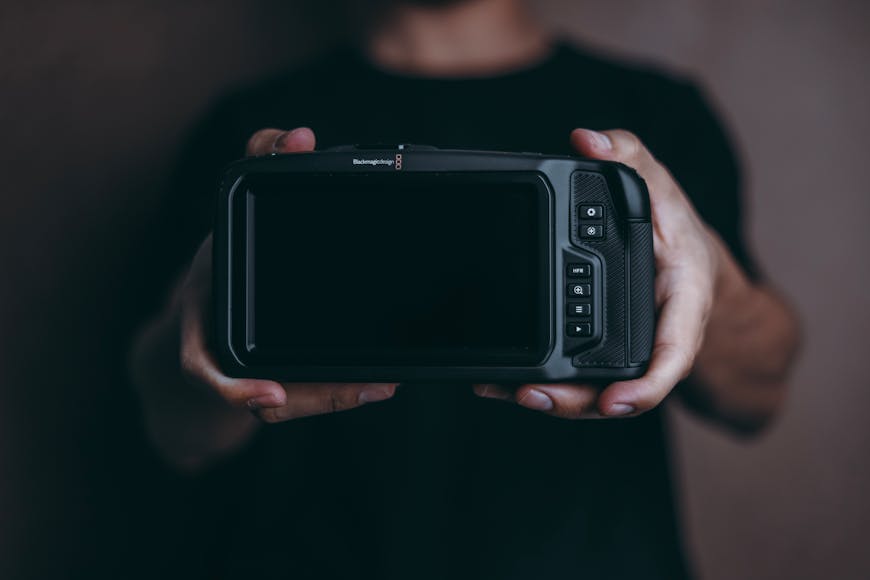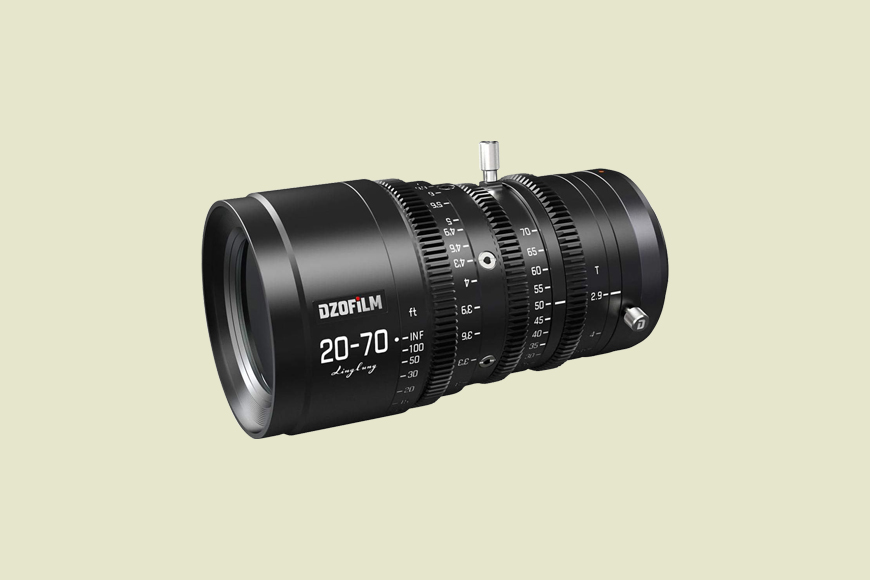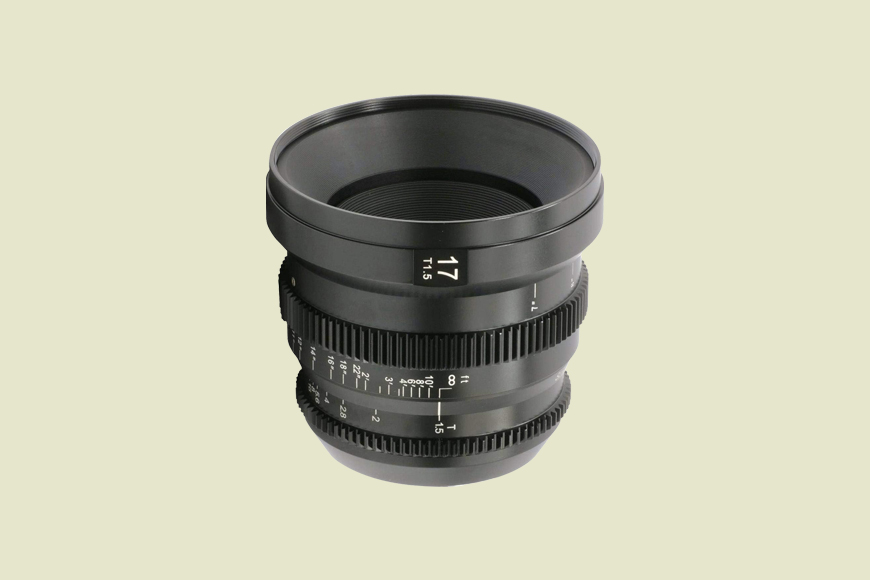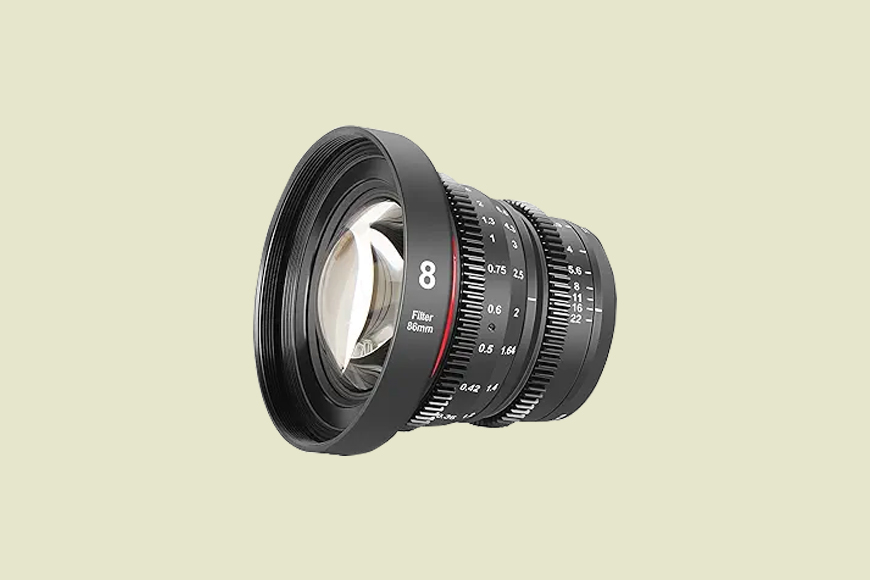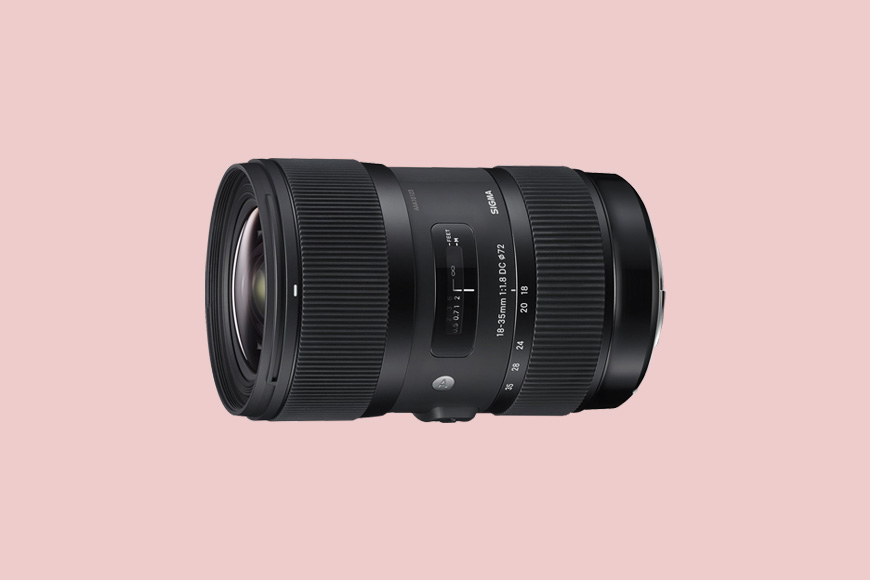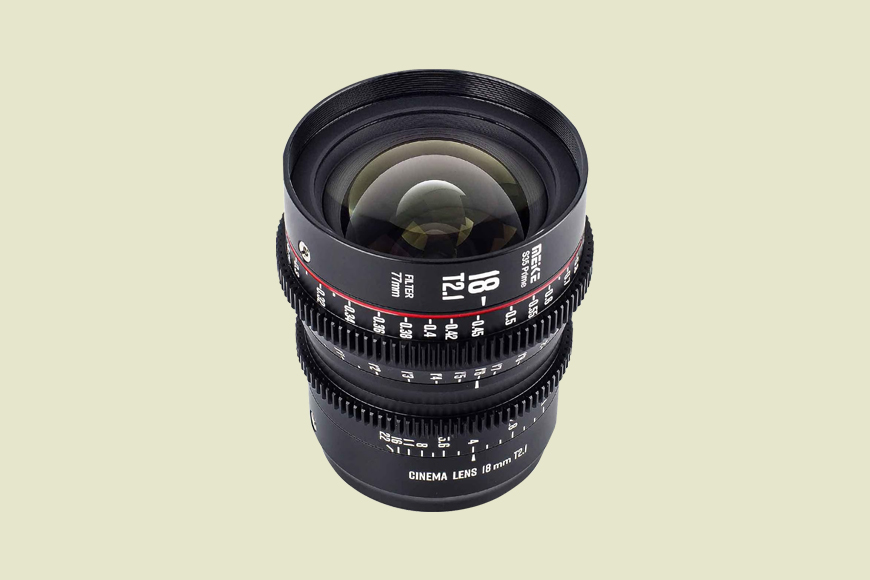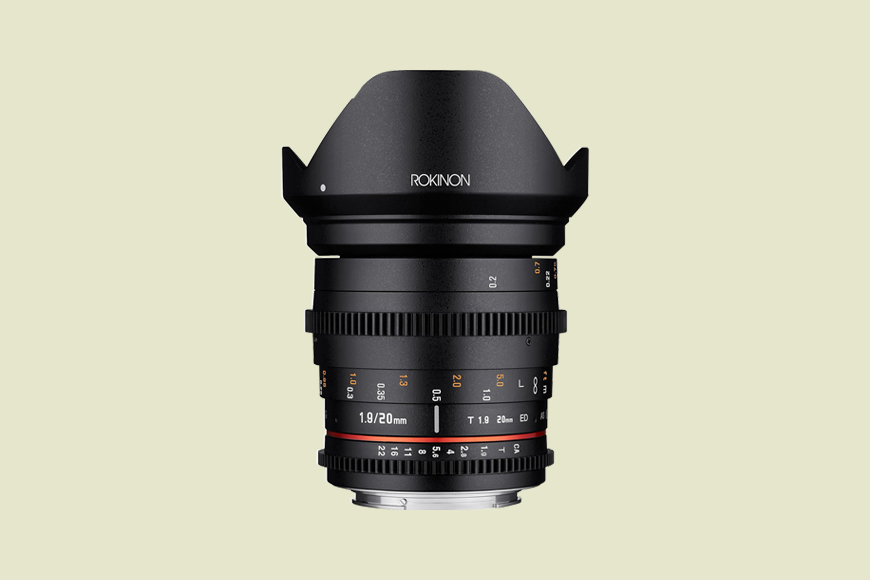[adinserter block=”1″]
This guide will explore the best lenses for the Blackmagic Pocket Cinema Camera 4K.
It’s one of the best compact cameras for filmmakers out there, and to get the most out of it, you’ll need some serious glass.
The good news is there are great lenses out there for every budget.
We’ll give you our top picks, and also answer some of the questions you might have.
What Are the Best Lenses for Blackmagic Pocket Cinema Camera 4k in 2024?
Olympus Zuiko Pro 12-40mm f/2.8 (Best MFT Standard Zoom)
- Weather-sealed
- Fixed aperture
- Good price
- Compact, lightweight, yet durable
- Tack-sharp images
With its 12-40mm focal range (24-80mm full-frame equivalent) and constant aperture of f/2.8, this is a versatile lens which will help you maintain consistent exposure levels when zooming in and out.
It’s known for its high-quality optics, which help to minimize distortion, chromatic aberration, and other optical aberrations.
You get extremely sharp, clear images with excellent contrast and colour accuracy. (In fact, the images are so good that I couldn’t find any user complaints about this lens!)
It’s an all-metal build and weather-sealed, so it’s robust and comfortable in less-than-perfect conditions.
It also has great autofocus capabilities. It features a movie and stills compatible (MSC) mechanism, which means it’s almost silent, quick, and reliable, with no focus hunting.
One feature the lens doesn’t have is image stabilization, so if you need that, go with the Leica 12-35mm f/2.8 [Amazon | B&H].
DZOFilm DZO 20-70mm T2.9 (Best MFT Cine Zoom)
- Durable build
- High-quality images
- Parfocal
- Versatile focal lengths
- Fast aperture
- Minimal focus distance is a little limiting
- No image stabilization
This is a parfocal, professional cine zoom lens with a versatile focal range that will make it possible for you to shoot a variety of different scenarios.
With its maximum aperture of T2.9, it also provides great low-light performance and shallow depth of field control.
Its parfocal design is ideal for filmmakers. The lens maintains focus throughout the zoom range, which allows users to zoom in or out without needing to constantly refocus.
It has a durable, all-metal construction, tactile, smooth and precise focus and zoom rings, and industry-standard gear teeth which make it compatible with follow focus systems and other cine lens accessories.
The optical quality is outstanding and, once again, like the Olympus lens above, people are always raving about the beautiful images they can create with this lens.
SLR Magic MicroPrime CINE 17mm T1.5 (Best MFT Budget CINE Prime)
- Great optical quality
- Great value
- Lightweight
- Gear teeth
The SLR Magic MicroPrime CINE 17mm T1.5 gives a real cinematic look and feel to your footage with its 17mm focal length and super-wide 94.8-degree view.
It’s compact, lightweight (great for handheld shooting), yet durable, with its metal build.
It’s designed with filmmakers in mind, is parfocal, and has geared manual focus and aperture rings for precise manual control.
It also has gear teeth, which allow you to use it with follow focus systems and other cine accessories.
Despite its jaw-droppingly low price (under US$400), it still manages to deliver premium-quality images.
They’re sharp, high-resolution, and have minimal distortions. The contrast is great and the colours are beautifully rendered.
If you want something even faster and are willing to shell out the extra cash, you can go for the Voigtlander Nokton 17.5mm f/0.95 [Amazon | B&H]. It’s not parfocal, but has excellent image quality.
Meike 8mm T2.9 (Best Budget Wide-Angle MFT Cinema Prime)
- Tactile control rings
- Great price
- Good low-light performance
- Durable, lightweight
Another lens that’s great value for money (just over US$400), and this time it’s a super wide-angle from Meike.
With its focal length of 8mm (16mm full-frame equivalent), it’s ideal for capturing, for example, expansive landscapes, or establishing shots.
That maximum aperture of T2.9 also gives you good low-light performance and some control over depth of field.
It’s durable yet compact and lightweight and, like the lenses mentioned previously in this guide, has the gear teeth that allow you to accessorise the lens.
The lens’ image quality is excellent, especially for the price.
Of course, ultra-wide lenses typically produce some distortion (it is in their nature), but this one handles it well and gives you sharp, clear images across the frame.
Sigma 18-35mm f/1.8 DC HSM Art (Best EF-Mount Standard Zoom)
- Outstanding quality images
- Good value
- Fast aperture
- Excellent autofocus
- Durable build
- Focus and zoom rings can be stiff
- Heavy
- No image stabilization
- Some focus breathing
This is a much-loved lens among both photographers and videographers, and for good reason.
The focal range of 18-35mm, allows you to shoot in a whole range of situations, and the fast, fixed aperture of f/1.8 provides excellent low-light performance and shallow depth of field control.
It’s robust, with a high-quality plastic exterior.
It also has an internal zoom, which means that the lens doesn’t change length. This is particularly useful for filmmakers, especially if they’re using a gimbal.
The lens has smooth, reliable, fast, and virtually silent autofocus.
And, the main reason it’s so loved: the image quality. It’s one of the sharpest lenses out there (edge to edge to edge), and produces great colours with minimal chromatic aberration.
The companion lens for this is the Sigma 50-100mm f/1.8 [Amazon | B&H].
MEKE 18mm T2.1 (Best EF-Mount Cinema Prime)
- Compact and lightweight
- Good value for money
- Great optical quality
- Dedicated cine lens
This is a robustly-constructed cine lens which is nevertheless compact and lightweight. That makes it portable and ideal for handheld or gimbal-mounted shooting setups.
It has a versatile focal length and fast maximum aperture, which gives you good low-light performance, creative flexibility, and good depth of field control.
It’s designed specifically for cine applications, so you get gear teeth for use with follow focus systems and the like, plus geared focus and aperture rings for that tactile and precise manual control.
Images are sharp even when shooting wide open, and they are richly colored with minimal optical aberrations.
If you find yourself in the mood for more MEKE EF-mount primes, you can also consider the MEKE 35mm T2.1 (Amazon | B&H), MEKE 50mm T2.1 (Amazon | B&H), MEKE 12mm T2.5 (Amazon | B&H), MEKE 75mm T2.1 (Amazon | B&H), MEKE 100mm T2.1 (Amazon | B&H), or the MEKE 25mm T2.1 (Amazon | B&H).
Rokinon 20mm T1.9 (Best EF-Mount Budget Cine Prime)
- Good optical quality
- Fast aperture
- Good price
- Clickless aperture ring
- No image stabilization
- Lens hood is small
The Rokinon 20mm T1.9 is an affordable lens with a great focal length and wide aperture for all-round shooting in challenging light conditions.
It’s compact and lightweight and is made out of metal, so it’s robust.
The metal casing has aperture markings (so focus pullers can see these easily), and the aperture ring and focus ring are geared for precise manual control.
The gear teeth are industry-standard, so you can use the lens with a follow focus system or other accessories.
It delivers high-quality and consistent images with minimal distortion or aberrations. They’re sharp across the frame.
Tokina Cinema ATX 11-20mm T2.9 (Best Premium EF-Mount Cine Zoom)
- Excellent optical quality
- Robust construction
- Interchangeable lens mount
- Constant aperture
- Compact
At just under US$2500, this is not a cheap lens, but you’ll certainly get what you pay for.
It’s parfocal, so it will hold the focal point throughout any zoom moves you make.
And its aperture is constant along the focal range. No problems there with having to adjust exposure as you zoom.
It’s a cine-specific design, so it’s made to withstand whatever your filmmaking environment throws at it.
It’s durable, yet still compact and lightweight, and it has the geared elements that both give you a tactile feel and allow you to use focus follow or another cine accessory.
It’s made of premium-quality optical components, so the image quality is outstanding. Like our top picks, you’d be hard-pressed to find anyone with anything bad to say about what it produces.
There’s minimal ghosting and flare and crisp, clean images with great color and contrast.
One cool feature is the interchangeable lens mount. You can swap the EF mount with Sony E, Nikon F, MFT, LPL, or PL mounts.
What Lenses Are Compatible With the Blackmagic Pocket Cinema Camera?
You can use MFT-mount lenses made by Panasonic, Olympus, and also other third-party brands like Sigma, Voigtländer, Tokina, Rokinon, MEKE, Meike, SLR, and DZOFilm.
Other lenses might need an adapter, which you can get for Canon EF, Nikon F, PL, and other lenses.
Some of the adapters that are frequently used with the BMPCC 4K, like the Metabones Speed Booster and Viltrox EF-M2, maintain the electronic communication between the camera and the lens, so you’re still able to use the lens’ autofocus and aperture control.
There are also compatible cinema lenses available from manufacturers like Zeiss, Leica, and Sigma Art, plus vintage or anamorphic lenses.
It’s important to note the difference, too, between the Blackmagic Pocket Cinema Camera and the Blackmagic Cinema Camera.
The BMPCC has a smaller Micro Four Thirds sensor and mount, while the Blackmagic Cinema Camera has a larger Super 35 sensor and L mount.
What Is a Native Lens On the Blackmagic Pocket Cinema Camera?
This refers to a lens specifically designed for the camera’s Micro Four Thirds (MFT) mount.
There are definite benefits to using native lenses.
Native MFT lenses are also compact and lightweight, complementing the BMPCC’s portable form factor.
With these lenses, you get a more streamlined setup, ideal for handheld or run-and-gun shooting scenarios.
They can also be attached directly to the camera’s mount, which gives you guaranteed reliable communication between the camera and lens.
This is especially important if your native MFT lens has autofocus or integrated control like aperture adjustment or image stabilisation. An adapter can often get in the way of those functions working properly.
There is, though, one drawback associated with some native MFT lenses for the BMPCC, and that’s the focus-by-wire system.
Unlike traditional mechanical focus rings, focus-by-wire lenses utilize electronic systems to control focus, and that can present challenges.
Focus-by-wire lenses sometimes lack the tactile feedback and precision of mechanical focus rings, which makes manual focusing less intuitive and responsive.
Focus-by-wire lenses might also not be compatible with traditional follow-focus systems designed for mechanical focus rings, which can impact your filming setup.
In fact, these issues are such that some filmmakers would advise you to avoid native lenses except for those in the Olympus Pro Series which have a focus clutch.
Native MFT Lenses vs EF-Mount + Adapter: Which Should You Use?
As outlined above, there are definite advantages to using native MFT lenses.
But EF lenses used in conjunction with an adapter can also be an excellent option.
Going this route gives you access to a vast selection of lenses from various manufacturers, including Canon, Sigma, and Zeiss, among others.
And, if you already own EF-mount lenses from other camera systems, you don’t need to invest more money than you already have.
EF-mount lenses with manual focus rings are also compatible with traditional follow-focus systems designed for mechanical focus control.
As we’ve already seen, this can be a drawback of native lenses, so with an EF and adapter system, this wouldn’t be an issue.
Standard Lenses vs Cine Lenses: Which Are Better on the BMPCC 4k?
Standard lenses are normally more affordable and versatile than cine lenses. They tend to be smaller and lighter, and many have autofocus capabilities.
Cine lenses, on the other hand, are specifically designed for filmmaking.
They offer premium optical quality, precise manual controls, and durable construction.
Cine lenses also have geared focus and aperture rings, giving users access to smooth, precise manual adjustments.
They’re also more tactile thanks to their marked focus and aperture rings.
Finally, cine lenses are designed to maintain consistent optical characteristics across the entire lens line-up, ensuring you get uniform image quality and color rendering, for example.
As for which is better on the BMPCC 4K, you can create great work with both; it depends on what your priorities are.
Using Third-party Lenses on the BMPCC: What You Need to Know
There are benefits and drawbacks.
You need to make sure that any adapter you use allows your lens to communicate fully with the camera, otherwise you may lose some crucial features.
You may also encounter limited compatibility with follow-focus systems.
Also, many third-party lenses provide excellent optical quality and performance, but they may not offer the same consistency as native or cine lenses.
If you do go ahead, make sure you invest in high-quality adapters and also practice manual focusing techniques so that you can make precise focus adjustments quickly.
You can also use the Blackmagic Pocket Cinema Camera 4K’s focus peaking and magnification features to help increase accuracy when focusing manually.
Can You Use C-mount Lenses on the Blackmagic Pocket Cinema Camera 4K?
Yes, you can use C-mount lenses on the BMPCC 4K, but you’ll need an adapter.
Can you use Super 16mm PL-mount lenses on the Blackmagic Pocket Cinema Camera 4K?
Yes, with the use of a PL to Micro Four Thirds adapter, you can use Super 16mm PL-mount lenses on the BMPCC 4K.
Do I Need Autofocus on Blackmagic 4k Lenses?
If you shoot mainly in situations where you have time to set up and adjust focus manually before recording, autofocus may not be necessary.
But, if you shoot fast-paced scenarios like documentaries, wildlife, sports, events, or run-and-gun filmmaking, autofocus will make sure you don’t miss any shots.
What Is a Speed Booster/Focal Reducer? Do I Need One?
A Speed Booster is an optical adapter designed to reduce the effective focal length of a lens while simultaneously increasing its maximum aperture.
They’re often used with cameras that have smaller sensors, to mitigate the crop factor and enhance low-light performance and depth of field control.
So, the Blackmagic Pocket Cinema Camera, given its small sensor, is an ideal partner.
Some good Speed Boosters for the BMPCC are the Metabones .71x [B&H], the Metabones .64x [Amazon | B&H], and the Viltrox .71x [Amazon | B&H].
A 0.71x Speed Booster reduces your focal length by a factor of 0.71x, which effectively widens your lens’ field of view by approximately 1.4 times.
A 0.64x Speed Booster gives you an even wider field of view.
As for whether you need one, if you would like wider fields of view, improved low-light performance, and a shallower depth of field, a Speed Booster will enhance your BMPCC setup.
Is a Speed Booster Worth It?
They’re worth it for the reasons outlined above.
Consider also that a Speed Booster can increase the versatility of your lens collection.
You can easily adapt lenses designed for larger sensor formats to the BMPCC. That opens up a wider range of lens options, including vintage lenses, cine lenses, and high-quality stills lenses, which in turn will give you more creative freedom.
What About PL-Mount Lenses?
Several Blackmagic cameras, such as the URSA Mini Pro, the URSA Mini Pro 12K, and the Blackmagic Design Production Camera 4K, have PL mounts.
PL-mount lenses are specifically designed for professional-level cinema cameras and are commonly used in high-end filmmaking and commercial productions.
They are well-known for having great optical quality and precise manual controls.
As they are cinema-specific, they often have geared focus and aperture rings and high-quality lens coatings to minimize flare and chromatic aberration.
They’re also compatible with professional filmmaking accessories like follow focus systems and matte boxes.
PL-Mount Starter Lenses
Rokinon Xeen 85mm T1.5 [Amazon | B&H]
This is a professional cine lens known for its high-quality optics and precise manual control. It has a durable all-metal construction, geared focus and aperture rings, and is compatible with follow focus systems.
DZOFilm Pictor 20-55mm T2.8 Super35 Parfocal Zoom Lens [Amazon | B&H]
Ideal for Blackmagic cameras. It’s versatile, consistent and built with high-quality optics which deliver sharp images with minimal distortion.
Other primes
All of the DZOFilm VESPID primes like this 35mm T2.1 Lens [Amazon | B&H] are excellent. You can also get a set of Vespid primes in a 6-lens [Amazon | B&H], 8-lens [B&H], or 10-lens kit [B&H].
Another excellent set of affordable prime cine lenses is the NiSi ATHENA prime lenses. You can get them either individually or as a 5-lens set. [Amazon | B&H].
There are, of course, plenty of other options, but primes like these are a great place to start.
FAQs About Blackmagic 4k Lenses
Is there continuous autofocus for video on the BlackMagic Pocket Camera?
There’s none built-in, but I have read that there’s a workaround using a CDA-TEK pocket Bluetooth controller paired with a sensor you put on top of the camera.
Are Voigtlander primes better than Veydra primes on a BMPCC?
Voigtlander lenses are well known for their excellent optical quality, durability, premium feel, and value for money.
Plus, they’re available in various focal lengths and aperture ranges, and designed for Micro Four Thirds mount cameras like the BMPCC.
Veydra primes are known for their sharpness and color rendering.
They’re compact and lightweight and incorporate industry-standard gear teeth on focus and aperture rings.
They’re available in various focal lengths optimized for Super 35mm sensors. That means their coverage matches the BMPCC’s sensor size.
And, they’re competitively priced.
What are the best lenses for low-light shooting with the BMPCC 4K?
To be honest, you could choose any of the lenses in this guide, as none of them have an aperture above f/2.9, and many are much faster than that.
Can I use Canon lenses on BMPCC 4K?
Yes, if you pair it with an EF to Micro Four Thirds lens adapter.
Can I use Nikon lenses on Blackmagic Pocket 4K?
Yes, with an F to Micro Four Thirds lens adapter.
How do you use Canon EF lenses on the BMPCC 4K?
Attach an EF to Micro Four Thirds adapter to the BMPCC 4K’s lens mount, then mount your Canon EF lens onto the adapter.
Is Blackmagic Pocket 4K good for photography?
The BMPCC 4K’s sensor has a great dynamic range, so it can produce excellent still photographs with great detail and color accuracy.
But, it’s lacking most of the features photographers want in a camera, e.g. advanced autofocus.
So, while it’s not ideal as a standalone stills camera, it’s good for anyone who wants a high-quality manual focus photo option contained in their cinema camera.
What lens mount is the Blackmagic 4k?
The BMPCC 4K has a Micro Four Thirds lens mount.
What is the best zoom lens for the BMPCC 4k
Out of the lenses in this guide, the Olympus Zuiko Pro 12-40mm f/2.8 is the best zoom lens for this camera.
What lenses are compatible with blackmagic pocket cinema 6k?
The BMPCC 6K has a Canon EF lens mount, which gives you access to the massive array of EF-mount lenses.
You can also use adapters to mount lenses with other lens mounts, such as Nikon F or PL, onto the BMPCC 6K.
What is the best lens for Blackmagic studio camera?
Generally, prime lenses with fixed focal lengths and wide apertures are preferred for studio environments.
They give you excellent optical quality, sharpness, and control over depth of field.
Added to that, you’ll want your lenses to have smooth, precise manual focus and aperture control.
What are the best lenses for documentary shooting with the BMPCC 4K?
Out of the ones in this guide, I’d go for the Sigma 18-35mm f/1.8 DC HSM Art or DZOFilm DZO 20-70mm T2.9 for ultimate versatility, and an SLR Magic MicroPrime CINE 17mm T1.5 for wide-angle low-light shots.
[adinserter block=”1″]
Credit : Source Post

